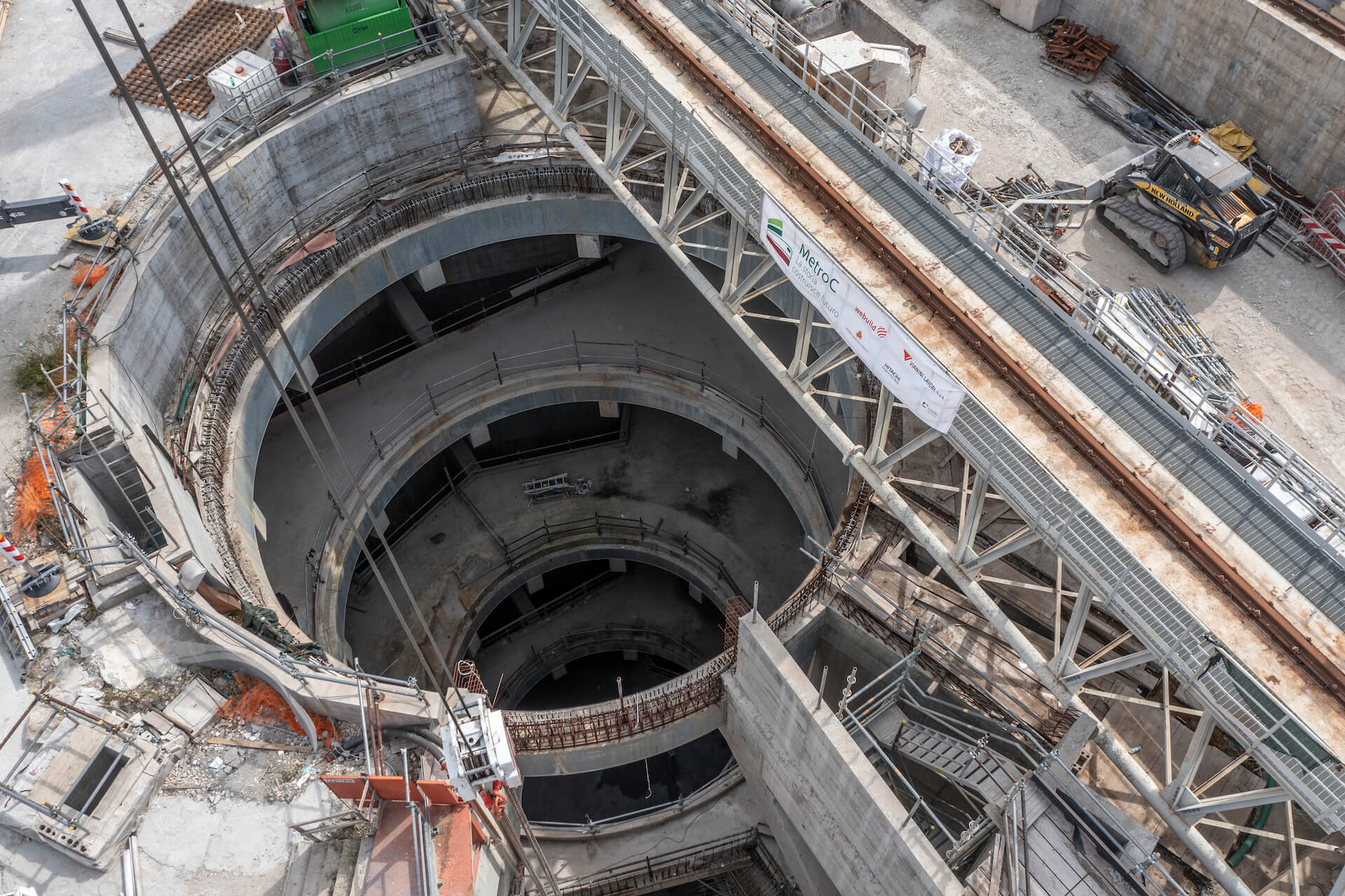Metro C: How it's built



Innovation Builds the Future
Line C represents a significant engineering challenge, given the unique nature of the territory it traverses, including areas of the historic center designated as UNESCO World Heritage Sites.
The construction techniques and technologies used for the construction of Rome’s third metro line have taken into account significant factors such as the presence of a complex geological profile, intense urbanization in some areas, and a universal historical and artistic heritage that must be preserved and enhanced.

From the use of mechanical moles for mechanized tunneling in underground sections, to the studies of the interaction between the metro line and monuments, and the interventions to safeguard the city’s historical and monumental heritage, from the ongoing monitoring of archaeological remains during construction to the techniques applied for soil consolidation, everything about Line C speaks of excellence in execution.
For the construction of Line C, archaeological excavations were carried out along the entire route, from Monte Compatri – Pantano to Colosseo – Fori Imperiali, considering the presence of significant archaeological and monumental heritage.
To connect the areas of Rome that are more urbanized, rich in archaeological treasures and invaluable monuments, the city has been traversed from the outskirts to the center, thanks to the construction of approximately 24 kilometers of tunnels (23.5 kilometers excavated mechanically and about 1 kilometer excavated traditionally) in the section from Monte Compatri/Pantano to Venezia (exclusive).

There are currently 22 active stations on Line C, including 11 built below street level, along with 13 multifunctional shafts. Additionally, 2 underground stations in the historic center of the capital are under construction, and work has begun on the Piazza Venezia station. This represents an infrastructure asset for the capital, constructed using the most advanced techniques and technologies to serve urban mass transit.


